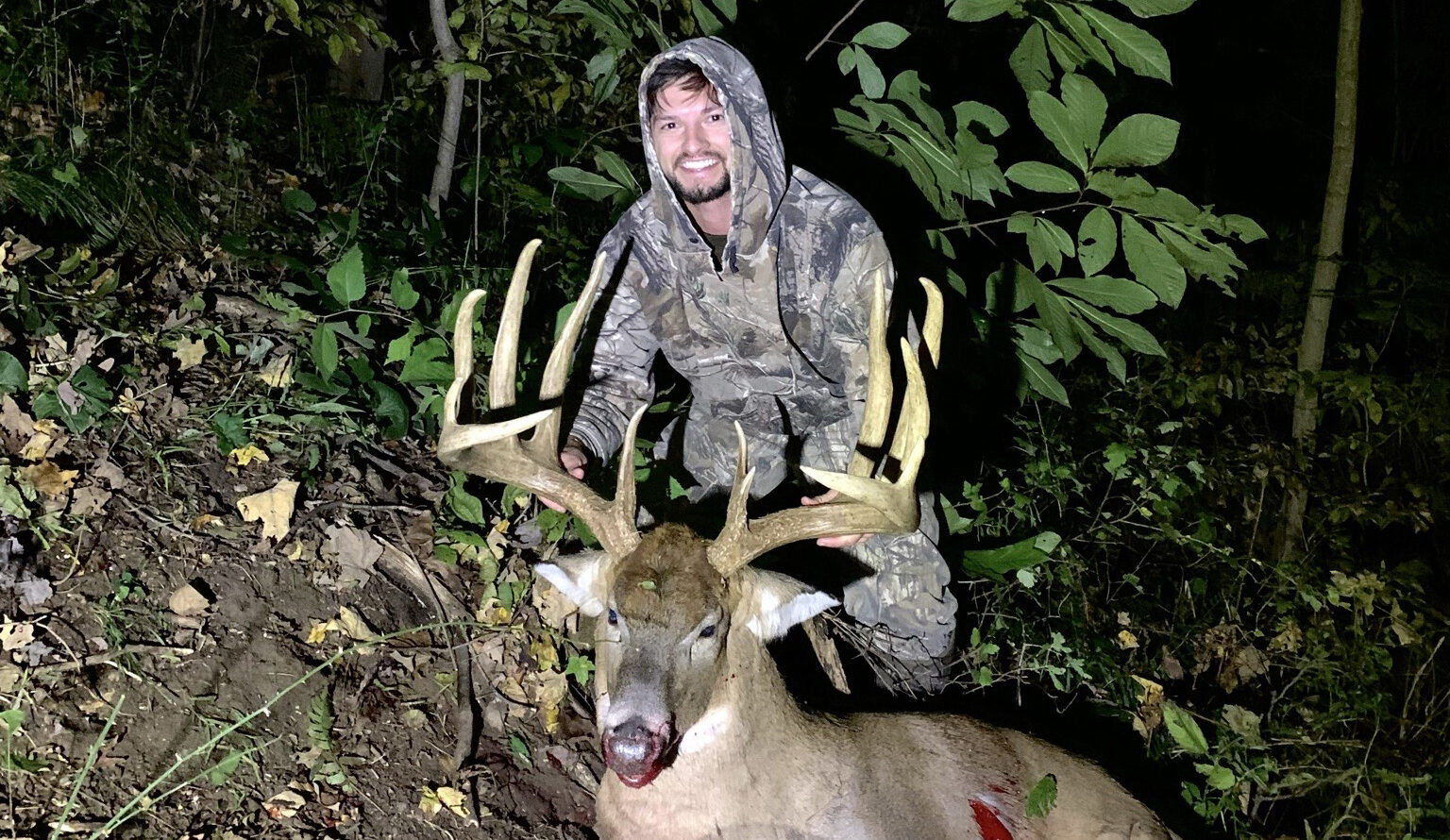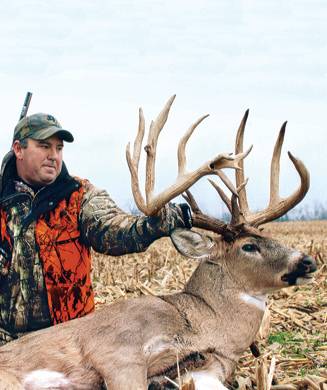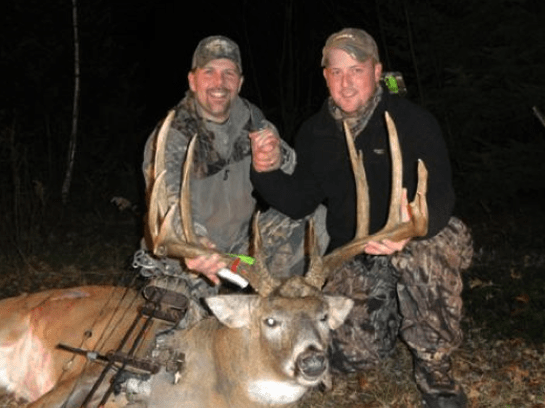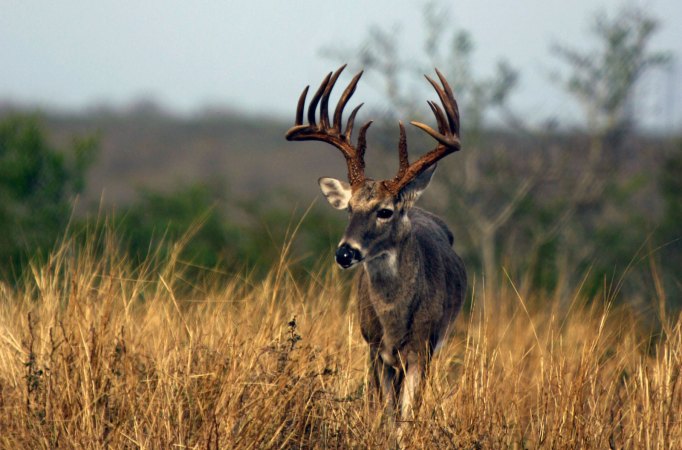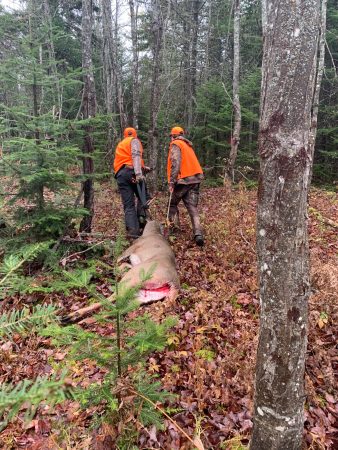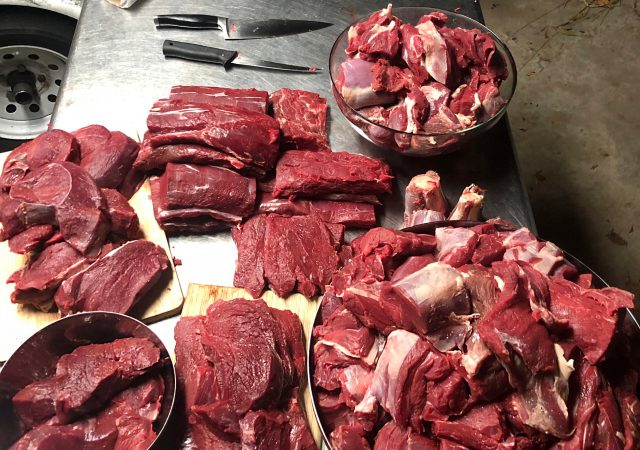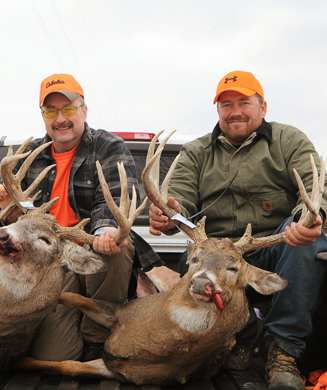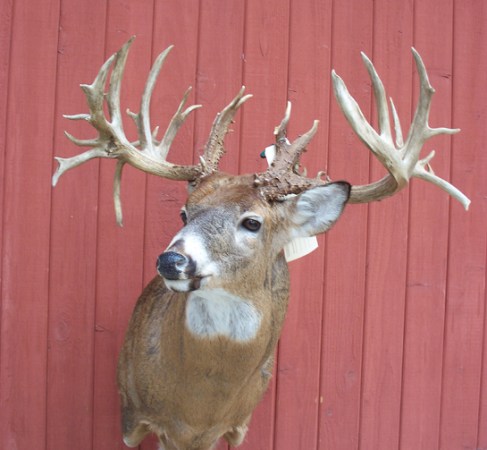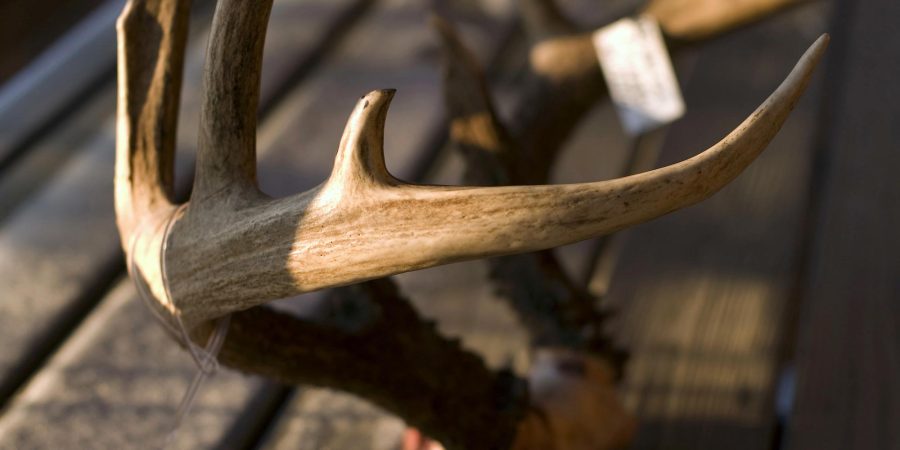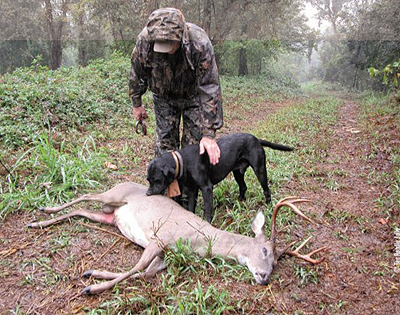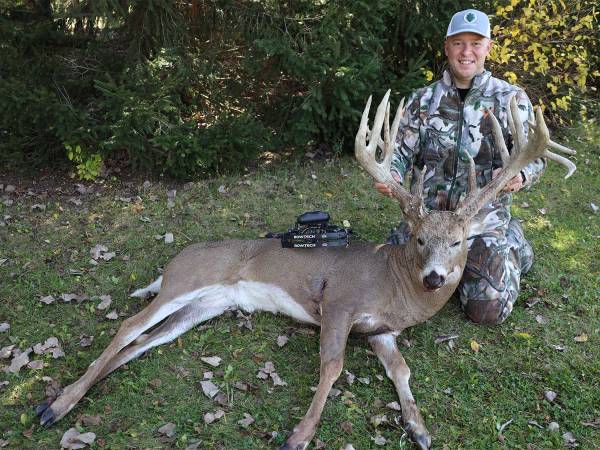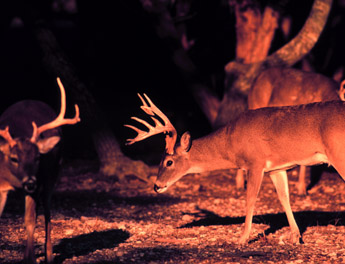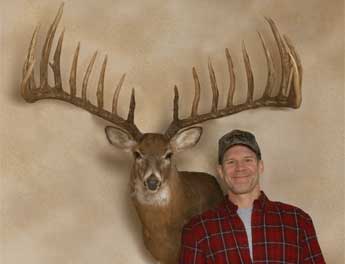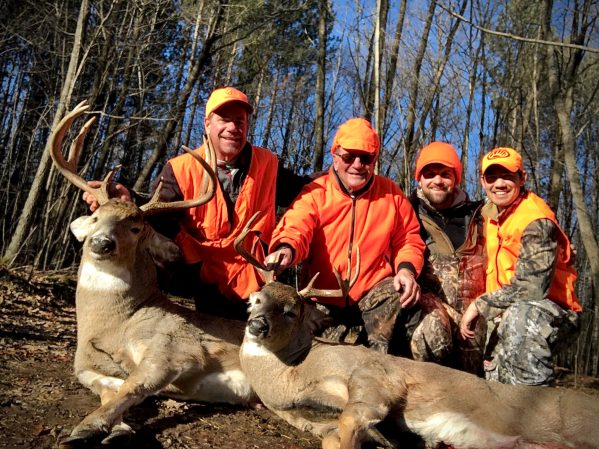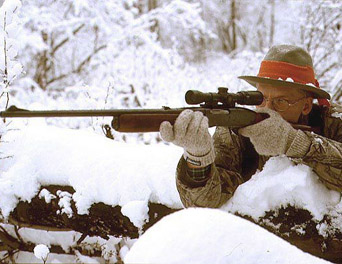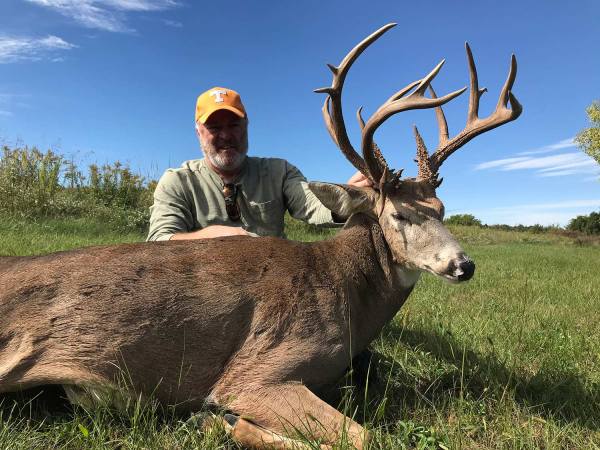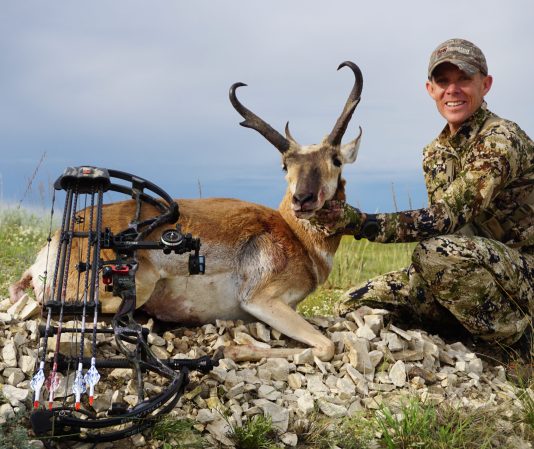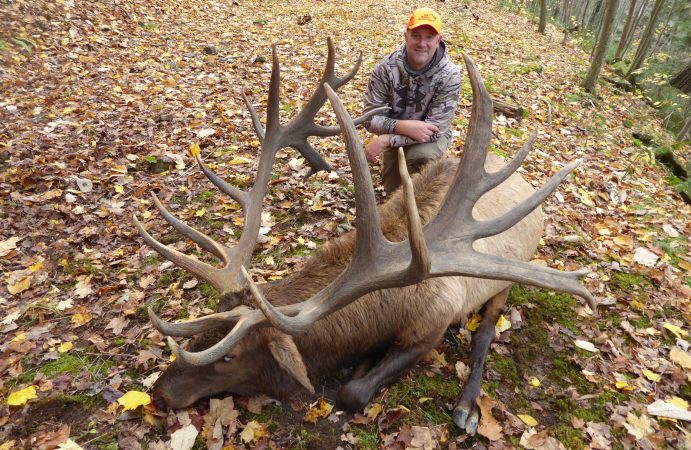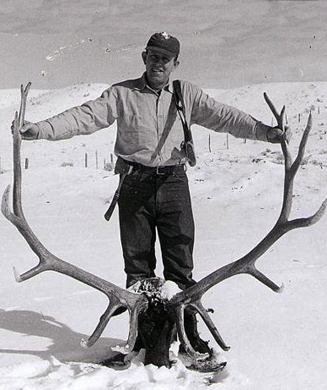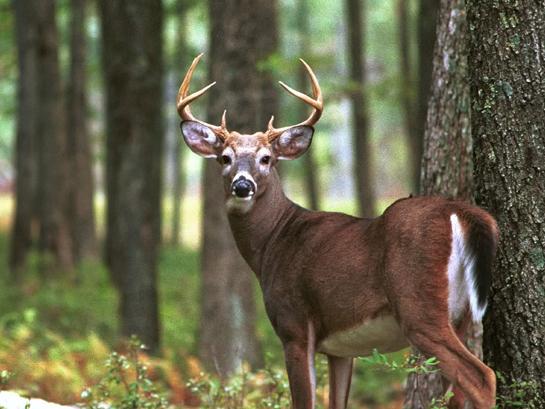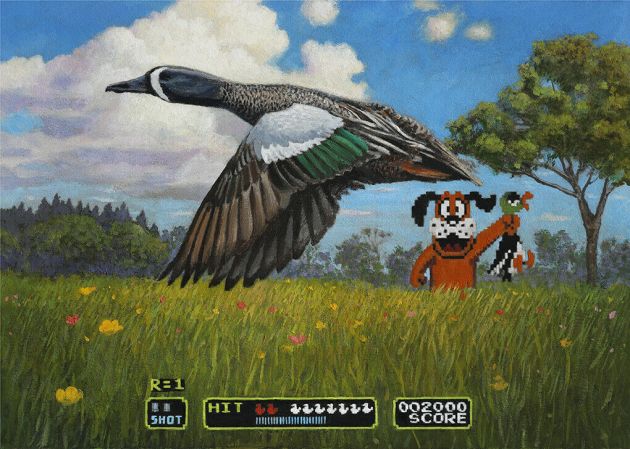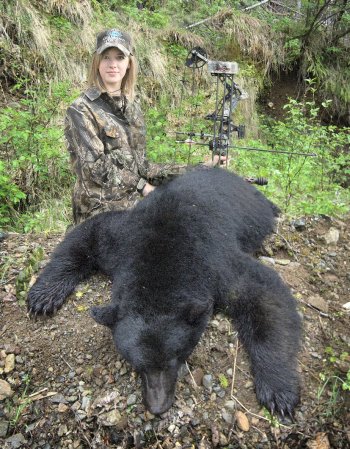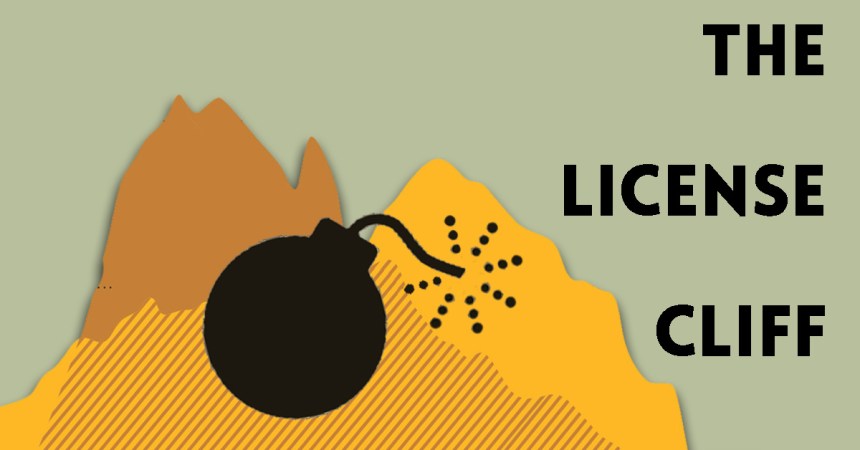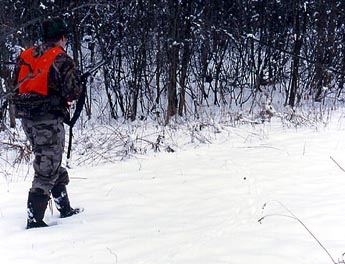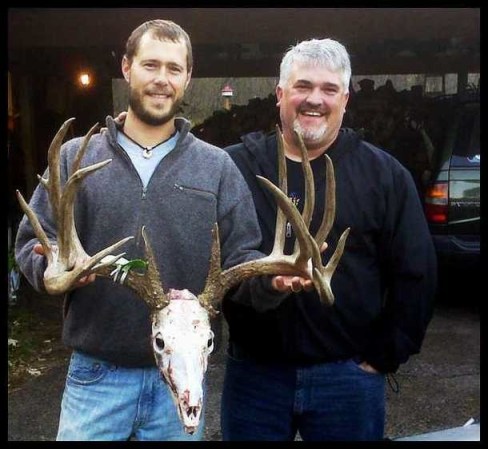Dustin Huff killed the biggest typical whitetail ever recorded in the U.S. not on a food plot in Iowa or a riverbottom in Kansas, but on a hog farm in Indiana. The 27-year-old Hoosier tagged the deer last fall on the same 185-acre farm he’s been hunting since he was a kid, and the land—corn, soybeans, and timber—hasn’t changed much in the last three decades. But the deer certainly have.
“It’s one of those properties that if we see a deer, we’re excited,” says Huff. “I remember leading up to killing my first buck. I was 14 years old and I went a week without seeing a deer [on that property]. I hunted seven days, and I didn’t see a deer.”
While the number of deer sightings remain hit or miss, the caliber of those deer have increased. The farm isn’t a meticulously managed parcel, either. Over the years, many hunters have had permission on it—Huff, his dad and nephew, their buddies, the landowner’s family. The landowner sets an antler minimum for experienced hunters: a buck’s rack should measure at least 15 inches wide. The buck Huff ended up killing there on Nov. 4 measured 25 inches wide, and became the new Indiana state record with a score of 211 4/8 inches. It’s the number two typical whitetail of all time, behind only the Hansen Buck, which was taken in Saskatchewan.
When the news about Huff’s buck spread last year, plenty of trophy buck hunters were caught off guard. A record whitetail from Indiana? But they shouldn’t have been. Indiana has been turning out more giant whitetails each season, and based on the most recent Boone & Crockett records, it’s now the number one trophy deer state in the country.
Record-Book Data Shows Indiana Is the New Top Whitetail State
One buck—no matter how big—isn’t enough to declare Indiana the hot new whitetail state. But when I started digging through Boone and Crockett’s record books this summer to see how other Indiana hunters are faring, I learned that Indiana has edged out every other state for the most record-book whitetail entries in 2019 and 2020 (entries for 2021 are still trickling in).
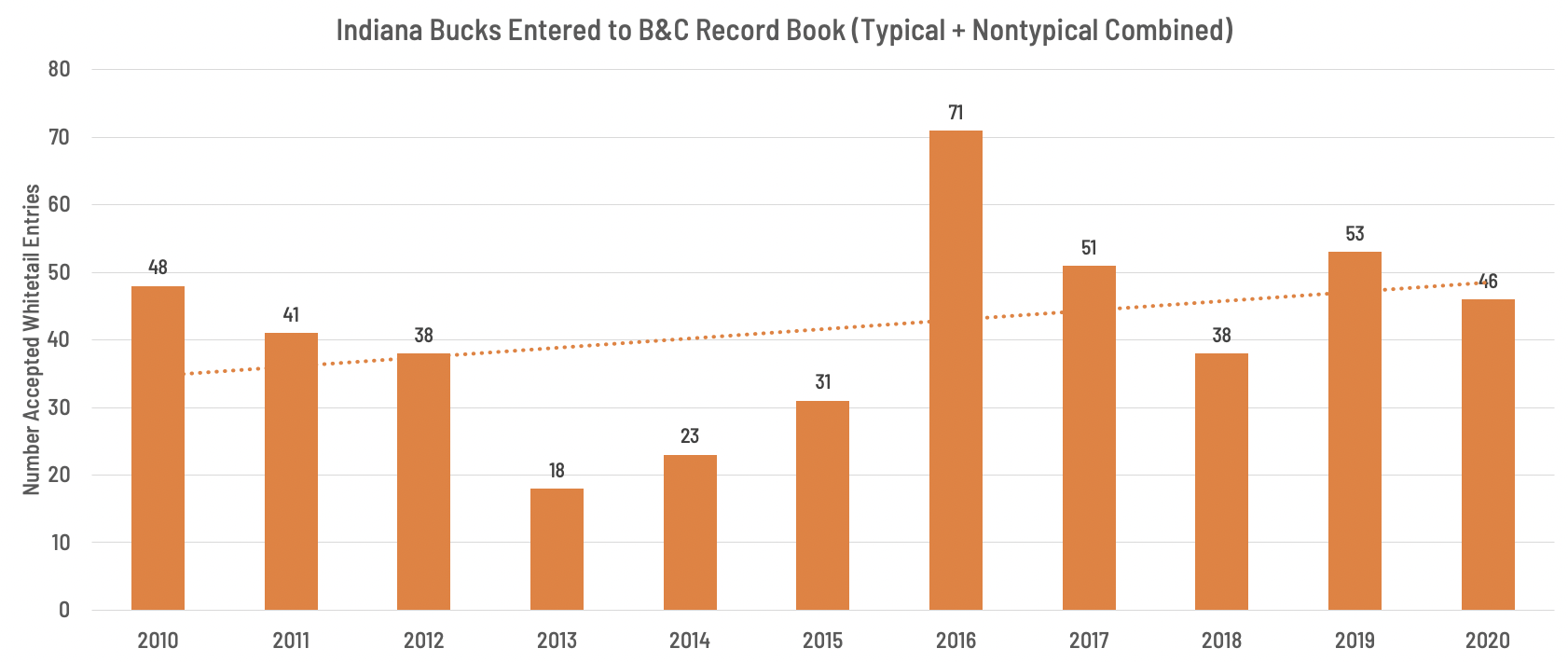
When I called up Indiana’s whitetail biologist, Joe Caudell, to ask about the trend, he told me he’d recently discovered the same thing.
“We still get requests from [Indiana] hunters to start some form of trophy deer management,” says Caudell, referring to regulations like antler-point restrictions. “And that’s actually why I started digging back into these [trophy] records. Because we were getting hunters who ask, ‘Can we change our deer management to be like Ohio, or Iowa?’ And I’m like, ‘Well, let me just see where we stand.’ Because if there’s a better system out there, we’ll consider it. And that’s when I started looking at these records and going, ‘Wait a minute…’”
As Caudell sifted through the Boone and Crockett record books, he found there wasn’t any need for drastic trophy management changes. In 2016 and 2017, Indiana came in third for record-book whitetail entries behind Ohio and Wisconsin. In 2018, Indiana ranked second behind Ohio. In 2019 (below) and 2020, Indiana took the top spot, with 53 and 46 whitetails respectively accepted into the B&C record books.
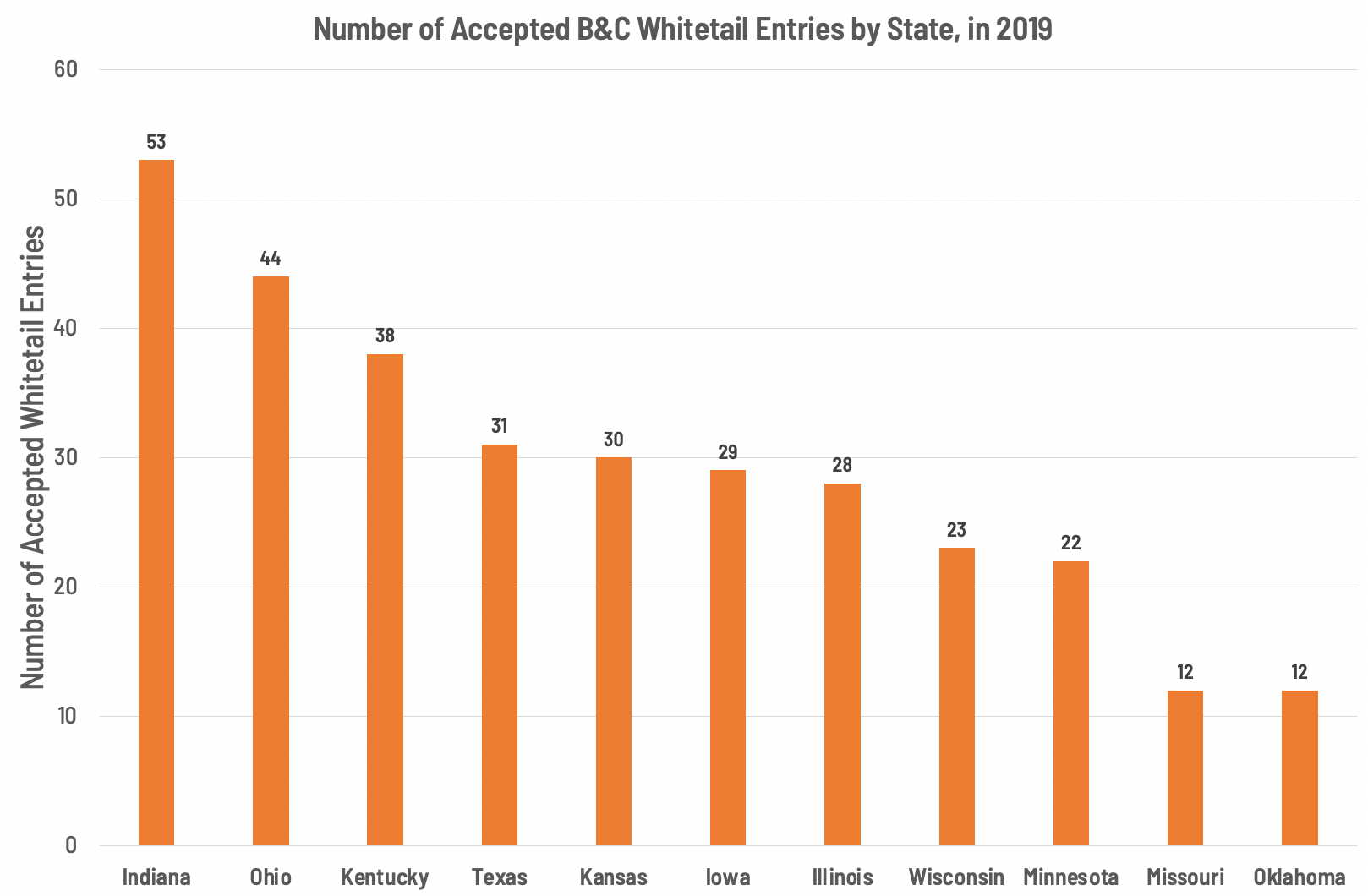
While the number of record book entries in any given year are relatively close between states, says Caudell, such comparisons don’t account for how little land Indiana has compared to other whitetail states. Indiana is the 38th largest state in the U.S. by square miles. Or, put another way, it’s smaller than iconic whitetail states like Kansas (the 13th largest state), Iowa (23rd), and even Ohio (35th). That means Indiana has been enjoying more record-book buck harvests per square mile than other states in recent years—and makes its rise to the top that much more impressive.
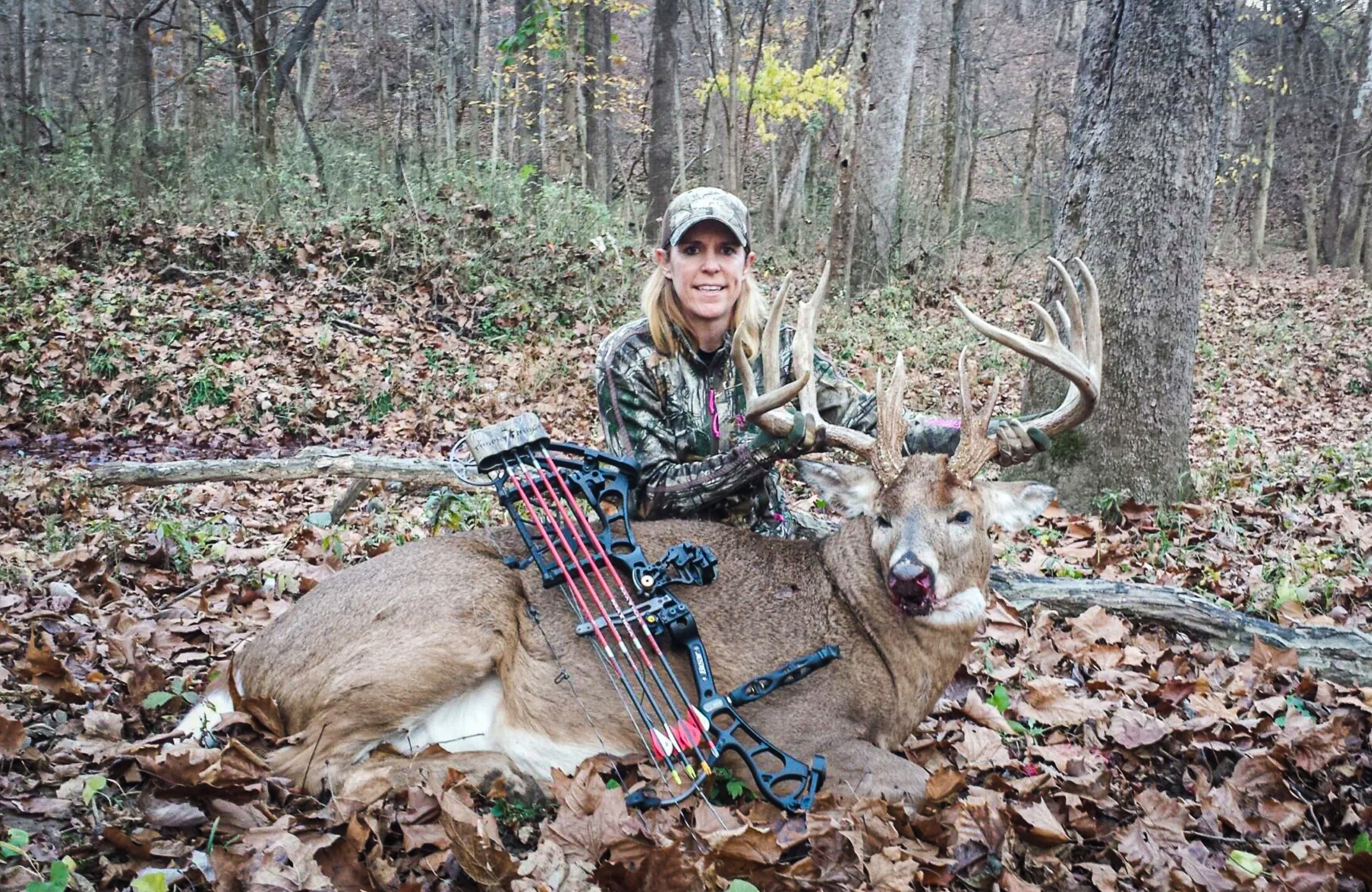
Why Is Indiana Producing Such Big Deer?
So, why is Indiana seeing this surge in record-book bucks? State-specific regulations have impacted the annual buck harvest, but it also has to do with a shifting culture among deer hunters.
1. Indiana Has a One-Buck Rule
In 2001, Indiana ended a regulation that allowed deer hunters to take multiple bucks and introduced a one-buck rule. Caudell says the age structure of Indiana bucks appears to be getting slightly older over time, and that increase can be traced back to the same year the one-buck rule was implemented.
“The one-buck rule forces hunters to make a choice,” says Caudell. “For a hunter who is interested in trying to shoot maybe a bigger buck than they shot last year, or a trophy deer to maybe qualify for Boone and Crockett or Pope and Young, they have to decide to pass on a deer. They’re not shooting just the first deer that they see. And we’ve seen in other states and previously in Indiana, when you shoot two bucks, a lot of times you’re just willing to put a buck in the freezer.”
When hunters are allowed to kill two bucks, they don’t actually kill that many more bucks. Instead what primarily changes is the age of the buck they do harvest.
“Something like eight or 10 percent of hunters actually harvest the second buck,” says Caudell. “So what happens is the bucks that do get harvested are those younger deer.”
DNR surveys show that most Indiana deer hunters are happy with their one-buck rule, especially when paired with the state’s historically liberal doe harvests. (Doe tags have been reduced in certain Indiana counties following a severe EHD outbreak in 2019, but remain higher than other states.) Hunters have plenty of opportunities to take deer.
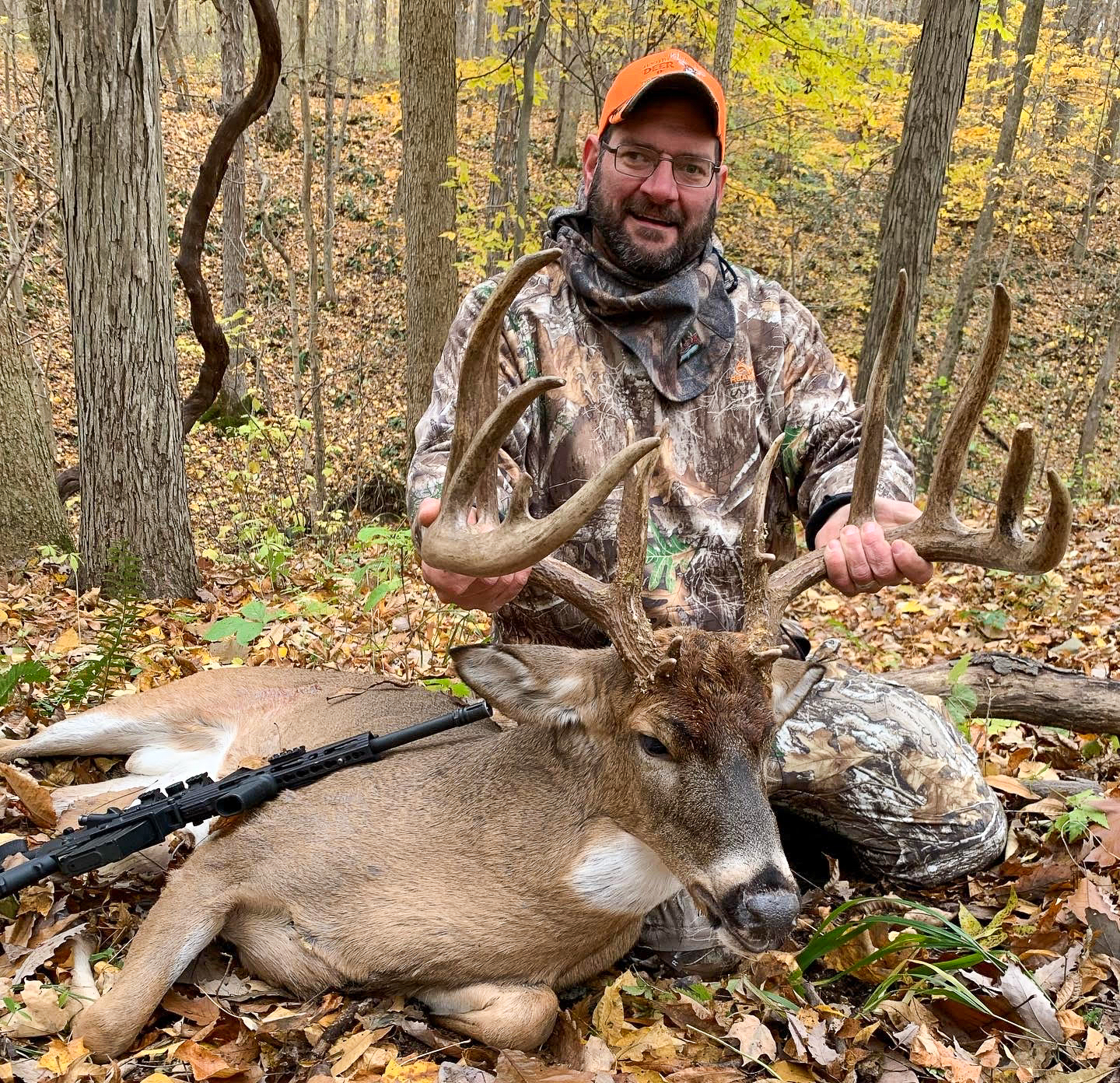
2. Indiana Has a Lot of Private Land
One of the biggest changes affecting trophy buck harvests is simply a preference shift among deer hunters, says Caudell. More hunters are interested in holding out for big bucks than in past decades, and that desire is reflected in the way they hunt. Under the one-buck rule, deer hunters still have the flexibility to kill any buck they like, from shooting a fork-horn to holding out for the stud 170 they’ve been seeing on their trail cam. And the average deer hunter’s ability to recognize and manage for mature bucks is improving, too.
“I think we’re seeing more and more hunters who are desiring these larger animals,” says Caudell. “So they are purposely managing for those.”
There’s a national trend toward managing for mature bucks and doing so is easier in a state like Indiana, which has very little public land. Indiana ranks 46th in public land availability among U.S. states, with just four percent of the state’s total land owned by the state and federal governments combined. But even small landowners can enjoy the benefits of big-deer management with cooperative agreements.
“One of the best things that hunters can do in a state like Indiana—or any state where the vast majority of it is private land—is forming deer cooperatives,” says Caudell. While these cooperative agreements may have grown more common nationwide, they’re still relatively underutilized by the average Indiana deer hunter. According to Indiana’s 2020 deer report (the most recent report available), just 3.2 percent of Indiana deer hunters were actively involved in a deer management cooperative or had been involved in one in the past (2.3 percent). Still, that’s more attention than the practice has gotten in previous state reports (none), and even a small shift in cooperation participation could affect the small sample size of B&C record-book entries.
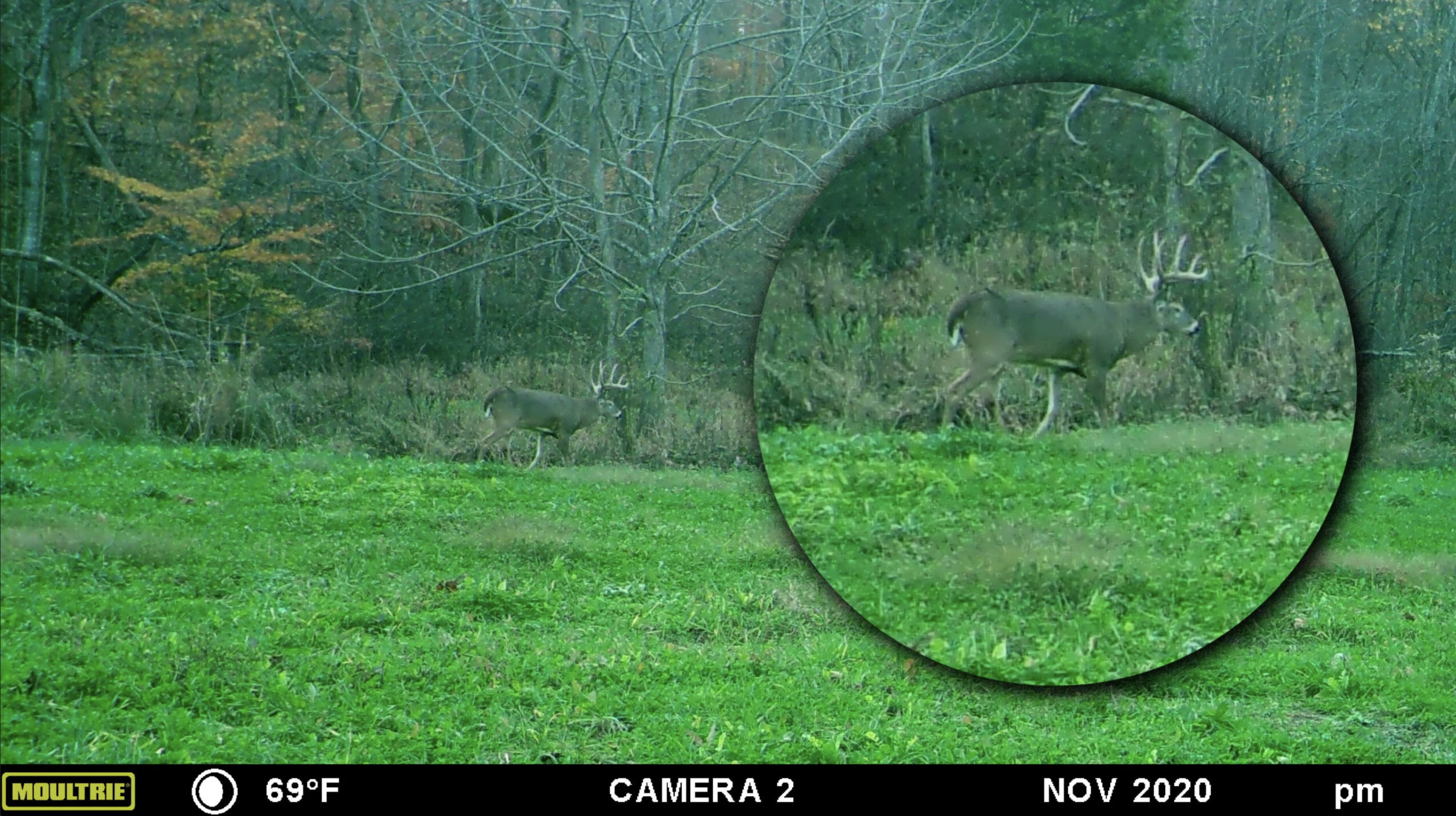
How Long Will Indiana’s Winning Whitetail Streak Last?
The rise and fall of whitetail states is nothing new: many big buck states have had their heydays with a surge of national attention, corresponding hunting pressure, and declining glory. Pike County, Illinois, is a classic example of place where whitetail notoriety has since receded. Even as Indiana has edged past states for the number of record book entries, states like Illinois, Kansas, Iowa, and others remain excellent whitetail states that produce many incredible bucks each year. It’s also impossible to determine just how many big bucks are actually entered into the record books. Hunters from another state may be killing more big bucks than Indiana hunters, and simply aren’t publicizing them or submitting them to Boone and Crockett.
For Indiana residents who are concerned with a possible influx of out-of-state hunters in the wake of the Huff buck’s publicity (and stories like this one), they might find a small comfort in increased non-resident fees that kick in this fall. The price of a non-resident buck-only firearms tag increased from $150 to $240 in 2022. Caudell points out that Indiana’s license fees remain lower than many big buck states, however, and he doesn’t expect the price to deter serious deer hunters from neighboring states. The real limiting factor for immediate out-of-state pressure, he says, is Indiana’s modest amount of public land.
It’s also unclear exactly how certain key variables have influenced Indiana’s rise to the top of the record books. For instance, Indiana introduced a rifle season for fall 2016, ending its status as a slug-only state. That reg change seems reflected in the B&C books, when Indiana’s record deer harvest spiked to 71 B&C whitetail entries in 2016, making it third in the nation for B&C deer that year.
Some hunters opposed the introduction of rifles, concerned that increased harvest opportunities would reduce herd quality. It may be the case that we’re seeing a bump in big deer harvests because rifles have increased hunters’ effective range in the last few years.
“One thing that always interests me when I look at the Boone and Crockett numbers is that you’re literally talking about the difference of 10 deer between a state having more Boone and Crockett deer than another. Or maybe like, two deer,” says Caudell, who agrees the state’s rifle harvest might be influencing Indiana’s spot in the record-book limelight. “So even just a little bit of an advantage that is occurring with the use of rifles might have helped take Indiana from a state that’s, say, second or third, to the number one spot simply because maybe a handful more of those trophy deer can actually be taken.”
There are also just more bucks being taken in Indiana overall in recent years. According to the National Deer Association’s 2022 Deer Report, the state’s antlered buck harvest has increased seven percent from 2018 to 2020, and 13 percent in 2020 compared to the five-year average. Curiously, however, Indiana is the only Midwestern state where deer hunters are actually increasing their take of younger bucks, according to the NDA (see chart below). In 2018, 1.5-year-old bucks accounted for 18 percent of Indiana’s buck harvest. By 2020, 1.5-year-old bucks made up 25 percent of it. That trend doesn’t bode well for Indiana’s top-trophy status in the long run.
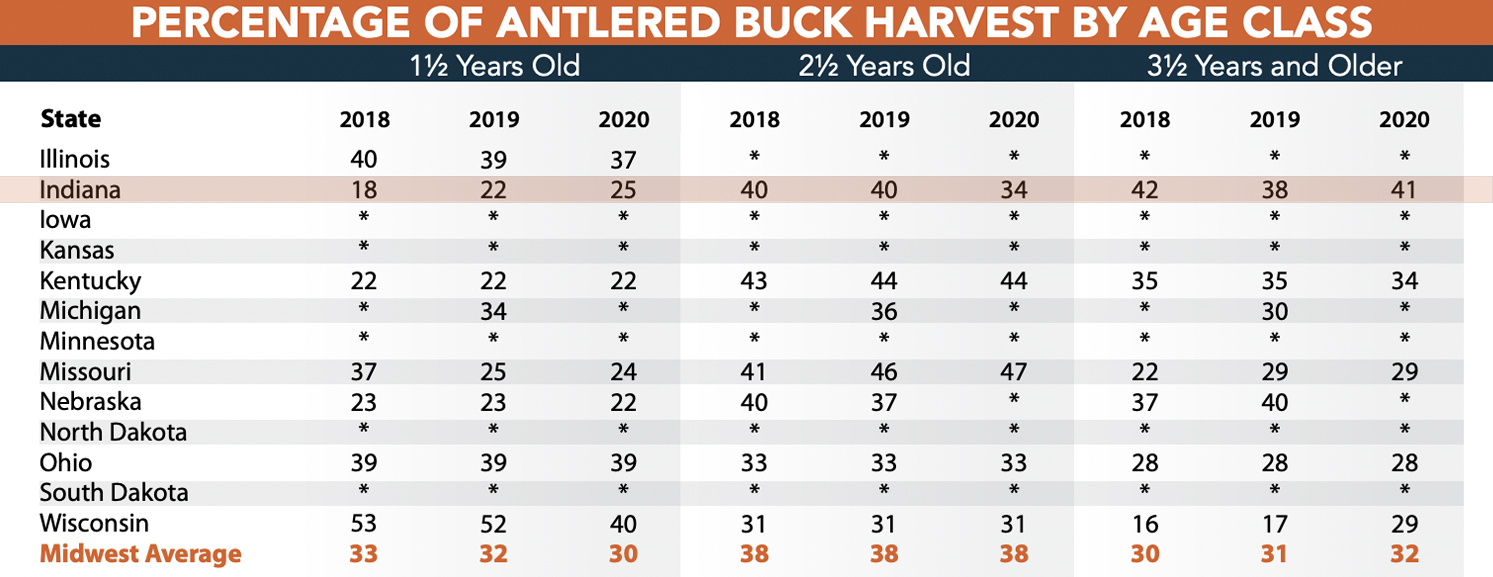
Chronic wasting disease has not yet been detected in wild Indiana deer, but Caudell was curious how CWD might affect Indiana’s trophy buck harvest if (or more accurately, when) it does surface. So he looked at Wisconsin’s recent B&C entries. The state has been dealing with a high CWD prevalence in certain areas and shifting regulations aimed at controlling it. Statewide, he says, the state’s B&C whitetail entries don’t yet appear to have been impacted by the fatal disease. (Wisconsin is a historic record-book powerhouse, with an all-time total of 1,912 B&C whitetail entries to its credit. By comparison, Indiana has just 914.)
Indiana Deer Are Getting Bigger
Indiana is my home turf for hunting whitetails. And before I dug into the record-books, I knew that—anecdotally at least—I’ve been seeing bigger deer there over the years. So have my neighbors and friends in neighboring counties. In fact, two seasons ago, I saw (and missed) the biggest deer I’ve seen on the hoof in any state—at my own deer camp in Indiana.
While the northern two thirds of the state are glaciated ag country, the rolling timber of southern Indiana makes locating and killing mature deer tricky, though certainly not impossible. Huff killed his buck in Decatur County, which straddles the state’s ancient glacial boundary. The thick-timbered farm I hunt resembles the ground Huff hunts: less ag, dense woods, steep hills, sudden ridges, and swirling thermals. It’s a good place for a deer to grow old.
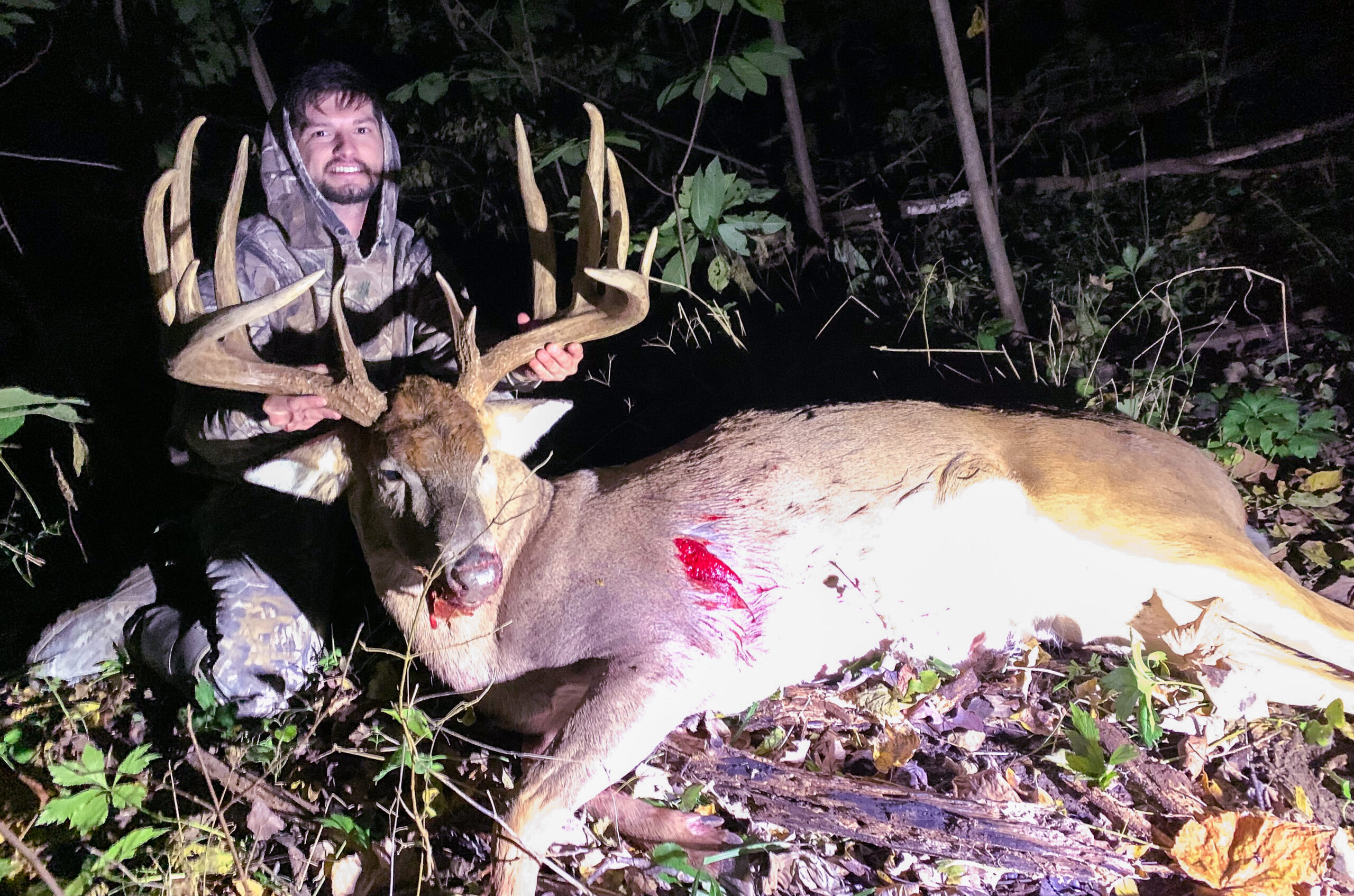
Lots of hunters have asked Huff if he had any history with the giant typical he ended up killing, but Huff says he never saw the deer until a few minutes before he killed it. He spotted the deer when it was about 75 yards away in the woods, picking its way toward him.
“All I seen was his rack, and that’s what’s so crazy to me,” Huff tells Outdoor Life. “Like this deer appeared. I never heard him. I never seen him coming. There was no warning. There was no heads up. He appeared. He had his nose to the ground and then he put his head up, and that’s whenever I started like, Oh my gosh—like this is unreal. I wish I had a video of him walking up this ridge because it just looked so unnatural. I mean, not unnatural, but I’ve just had never seen something that big walk through the woods. He was just pushing saplings out of the way like it was nothing.”
Huff ultimately threaded a crossbow bolt through dense branches to kill the buck at 40 yards. After watching the buck tip over, Huff backed out and returned with the property owner, his kids, and Huff’s own brother-in-law.
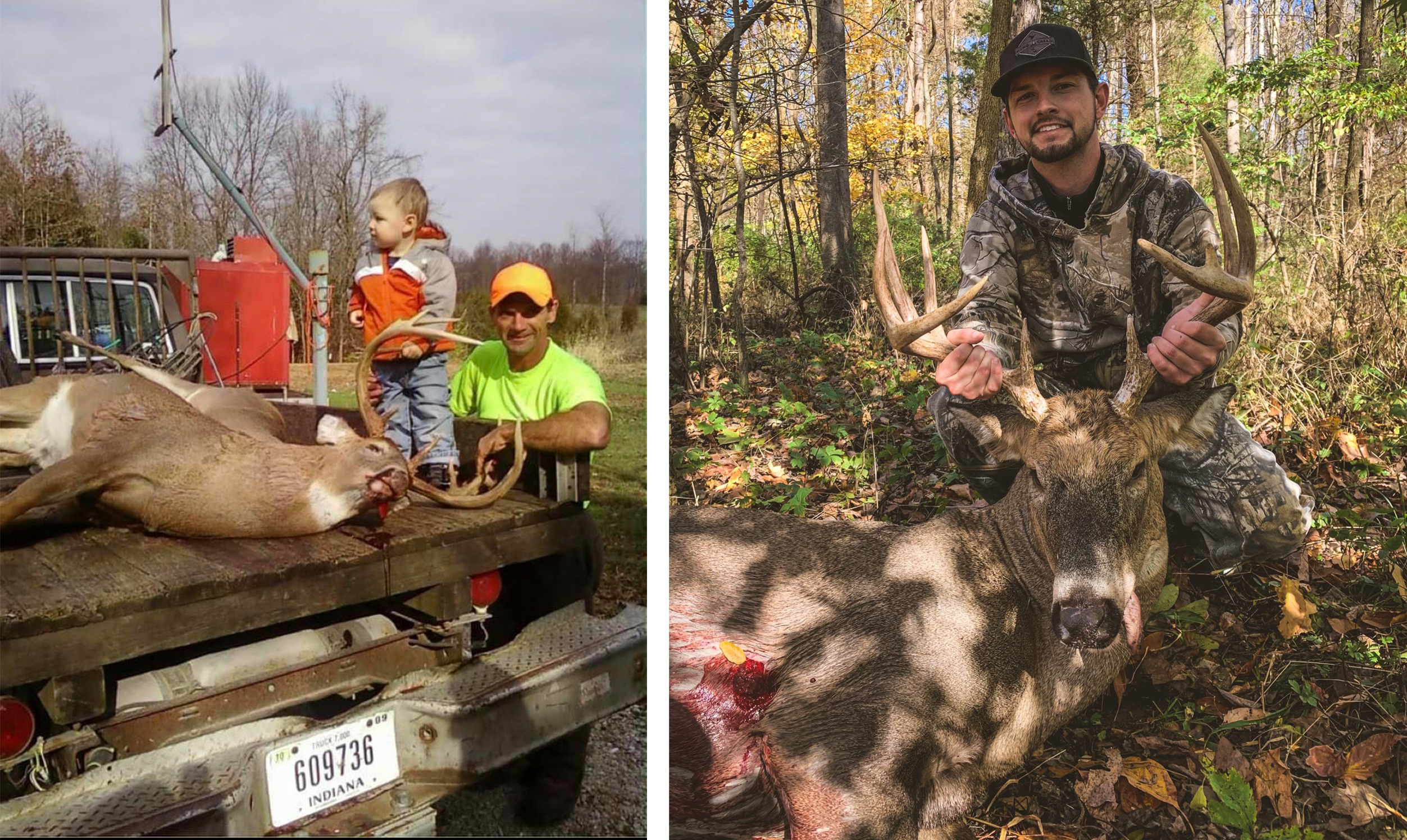
“I was just telling them, ‘This is a 170-inch deer.’ And they’re like, ‘There’s no way you got a 170-inch deer.’ And I said, ‘I‘m telling you, this is a big deer!’” Huff says. “And then once we got up to him, I even said, ‘That’s a 180.’ And then I started saying a 185-inch deer. And that’s when the property owner goes, ‘Now Dusty, I’d say it’s a high 160.’”
In 2018, Luke Brewster famously killed the current world-record nontypical whitetail in an Illinois county that abuts the Indiana state line. As the crow flies, the counties where Huff and Brewster killed their record bucks are roughly 120 miles apart. Brewster’s 327-inch buck wasn’t a blip, either. His hunting buddies were killing mature deer in the area before his record-breaking hunt, and have continued to do so since. And I’m willing to bet that even if Indiana’s rise to the top of the record books is short lived, Indiana deer hunters will keep killing good bucks long after the national spotlight shifts to another state.

